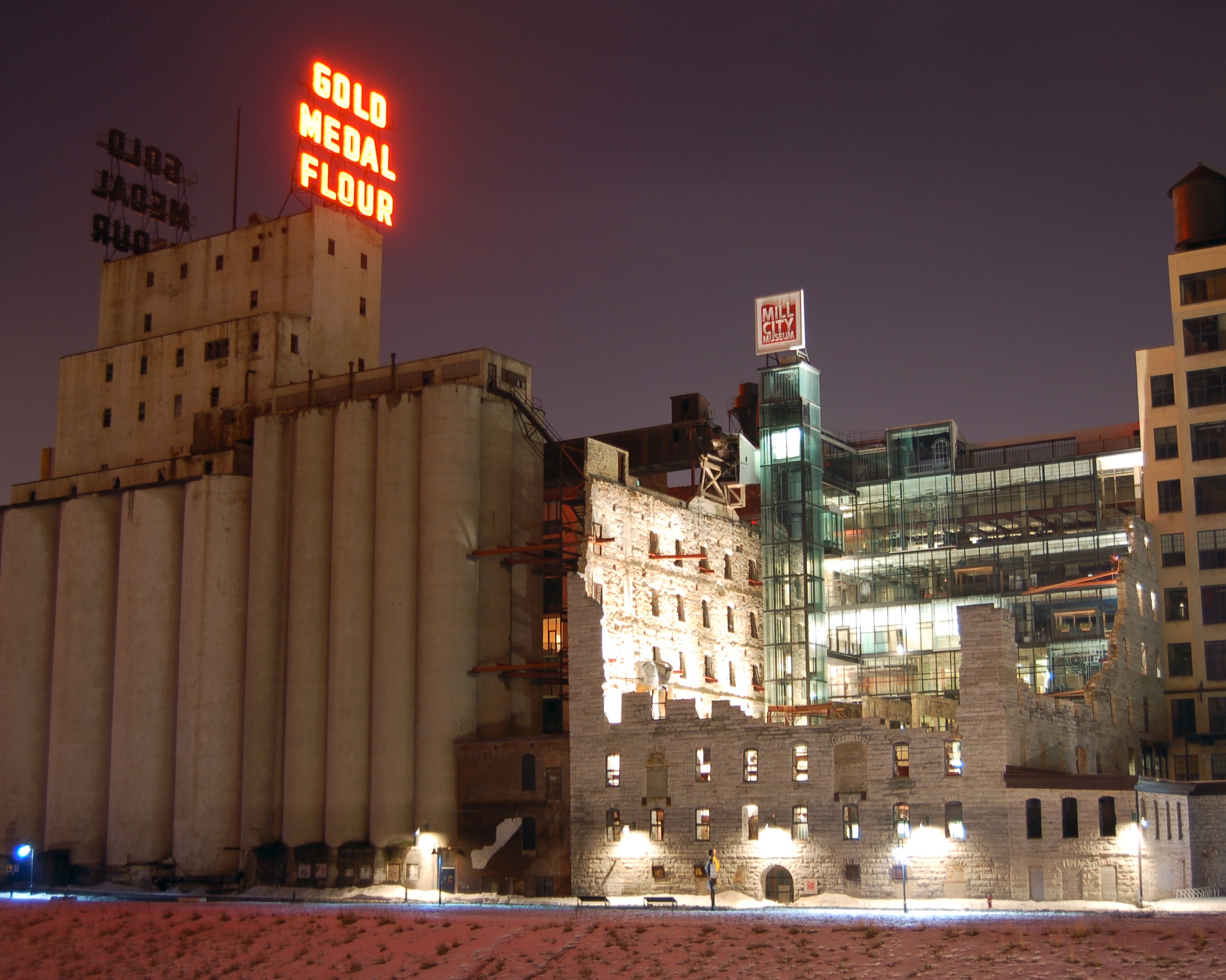SEPTEMBER 6, 2019 – Our family first crossed paths with David in July 1967, when my mother responded to an ad he’d placed in the Minneapolis Star. He was off to the Army and had to sell his beloved year-old collie, Björn.
We crossed paths with David again in 1996, not knowing it was the same person who had sold us Björn. The occasion: my younger sister’s marriage to David’s brother-in-law. It took nearly two more years for us all to figure out the collie connection.
I’ve since gotten to know David well. He’s a favorite of mine—smart as a whip, quick to laugh and a fountain of knowledge.
Yesterday, I realized I’d had no idea how big a fountain.
It all started when my lawyer friend Rich posted on FB a criticism of a book he’d read about the historic Minneapolis flour mills along the Mississippi River. His complaint was the lack of any mention of the turbines driven by the river. Upon seeing Rich’s post, I suggested that we lean on David. I knew he’d been a former guide at the on-site Mill Museum run by the Minnesota Historical Society. David surely knew a lot about those turbines.
And a whole lot more, as it turned out.
Yesterday at noon, Rich, our Delta pilot friend Joe, and I met David at the museum for what turned out to be an extraordinary plunge into the history of our part of the world.
With numerous large-scale visual aids that he’d assembled on his own time and initiative, David started us off with a geologic survey of this portion of the Mississippi River basin. This part of the “plunge” took us back to the last ice age so we could better understand the origins of the river. We then got a lesson in early European exploration of the region and then took a deep dive into the technology of the mills and the turbines that powered them. In the process, we learned about the men who would make Minneapolis the largest milling center in the world.
The hero of the story was one William de La Barre, an Austrian-born immigrant who became a self-taught engineer of daunting capabilities. Many other figures also left enormous footprints here: James J. Hill, the railroad baron, who, as David explained, was also a giant in the formation of Minnesota agriculture; C. C. Washburn and John Crosby of the Washburn-Crosby Company (Barre’s employer), later General Mills; John and Charles Pillsbury; and many others whom David seemed to know so well, you’d think he’d been one of them. In fact he had been . . . by impersonation in his days as a guide.
At least eleventeen times during our session with David, I told him he should write the definitive history of those men and their mills. He’s already got the illustrations in hand. The rest is in his head.
Thanks to David, yesterday Rich, Joe and I were pigs in mud—make that “pigs in flour”; Gold Medal Flour.
© 2019 Eric Nilsson
